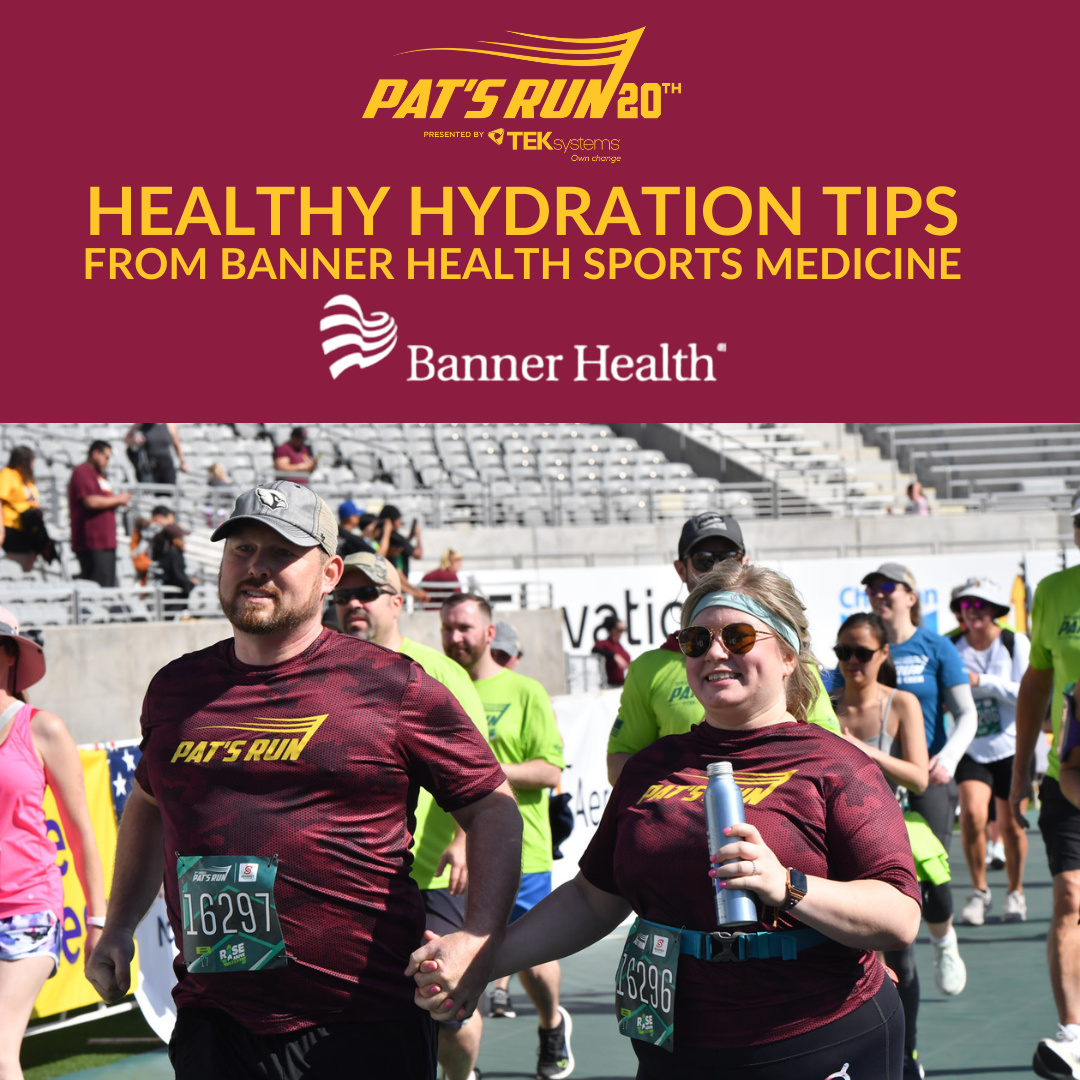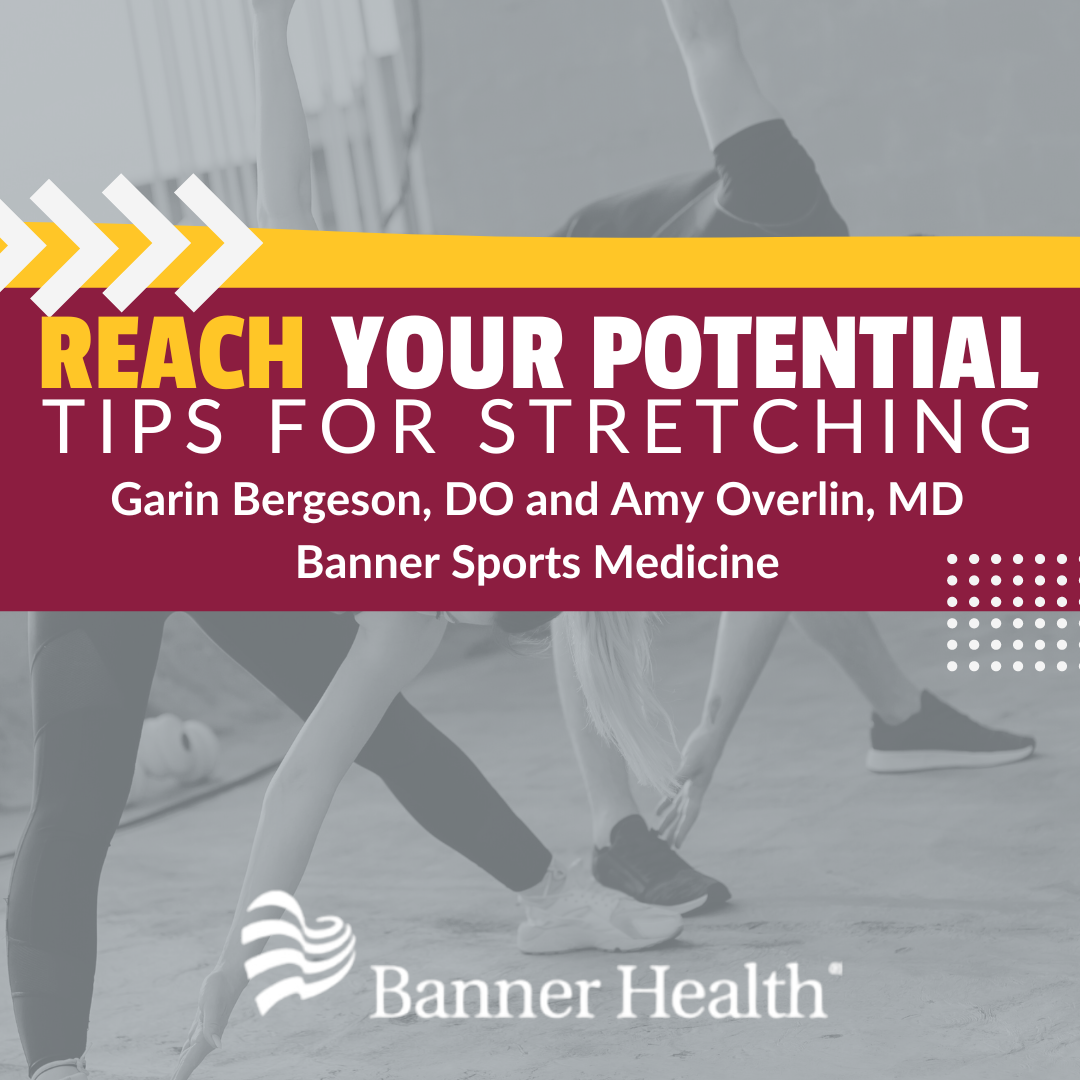How to Optimize Wellness After the Finish Line
by Mary Gomez DO, Amy Overlin MD, Banner Health
Picture yourself running across the imaginary finish line of Pat’s Run. Maybe you congratulate yourself or a loved one with whom you are running. While this year may not be the classic festive ending in the stadium we’ve grown to love with Pat’s Run, it’s still an incredible accomplishment! At this point, you may feel like all the work is done…but wait there are few things to take care of in order to optimize your recovery after the race.
NUTRITION AND HYDRATION
The specifics of what and when to eat and drink after a race are dependent on many factors therefore it’s hard to generalize for all. Both nutrition and hydration status heading into a race, and duration and intensity of exercise, play a role in this decision-making. Nonetheless, acquiring adequate fluids, electrolytes, energy, and carbohydrates to replace what was lost during a race and ensuring rapid recovery is important. Eating a high carbohydrate snack during the first 30 minutes after the race and again two hours later may be helpful to replace the energy stores lost. Protein consumed after exercise will provide building blocks for the muscles to repair themselves.
You can rehydrate appropriately replenishing fluids and electrolytes lost during exercise with time and regular intake of meals and beverages. A good rule is to drink 20-24 oz of water or a sports drink for every pound of lost weight from the race. Consuming electrolyte rich drinks may help prevent exercise-associated muscle cramping and has additional benefits in absorption and recovery. (Please see the blog post on Healthy Hydration for Pats Run for more details.)
STRETCHING
There are common overuse injuries that often accompany an increase in training and may occur after races. Stretching can help with recovery and prevent these injuries. So take some time after the race to stretch, especially any areas of your body that might be prone to injury. (Please see the blog post Stretching: the Why and How for Flexibility for more details.)
SLEEP
Sleep is considered a keystone habit for not just athletes but for anyone trying to live a healthier more enriching life. If you aren’t familiar with the term, a keystone habit is the adoption of a healthy habit in your daily routine that positively affects multiple areas of your life. In other words, a small change can in your sleep can have a major impact on your overall health and wellbeing and are critically important after training or after a race day. Sleep hygiene is the fancy term for strategies you can utilize to help get a good night’s sleep on a consistent basis. These include:
- Waking up and getting to bed at the same time each day
- Having a nightly bedtime routine
- Avoiding stimulants and distractions (Turn off the computer and get off your phone onehour before you want to go to bed.)
- Avoiding caffeine after noon each day
- Meditating before bed
- Avoiding tobacco and alcohol
- Avoiding eating late at night
- Keeping your bedroom cool
- Blocking out the light (Utilize curtains or shades over windows)
- Using white noise if sounds keep you awake
A quality night’s sleep helps in your recovery after a mentally and physically exhausting feat whether you are post-training or post-race. Simply put sleep allows the body and mind to rest so you are ready to work at your best the next day.
Work smarter not just harder and don’t forget to give yourself the tools to recover efficiently and effectively.
Please note, not all recommendations apply to all athletes. If you have any medical conditions, please contact your physician for specific recommendations to help in your recovery after the race.
References:
- Nutrition and Athletic Performance, Medicine & Science in Sports & Exercise: March 2009 – Volume 41 – Issue 3 – p 709-731 doi: 10.1249/MSS.0b013e31890eb86
- Vitale KC, Owens R, Hopkins SR, Malhotra A. Sleep Hygiene for Optimizing Recovery in Athletes: Review and Recommendations. Int J Sports Med. 2019 Aug;40(8):535-543. doi: 10.1055/a-0905-3103. Epub 2019 Jul 9. PMID: 31288293; PMCID: PMC6988893.
- Miller M D., Thompson S R. DeLee & Drez’s Orthopaedic Sports Medicine E-Book. Elsevier Health Sciences; 2014.
- Cosca DD, Navazio F. Common problems in endurance athletes. American Family Physician. 2007 Jul;76(2):237-244.




